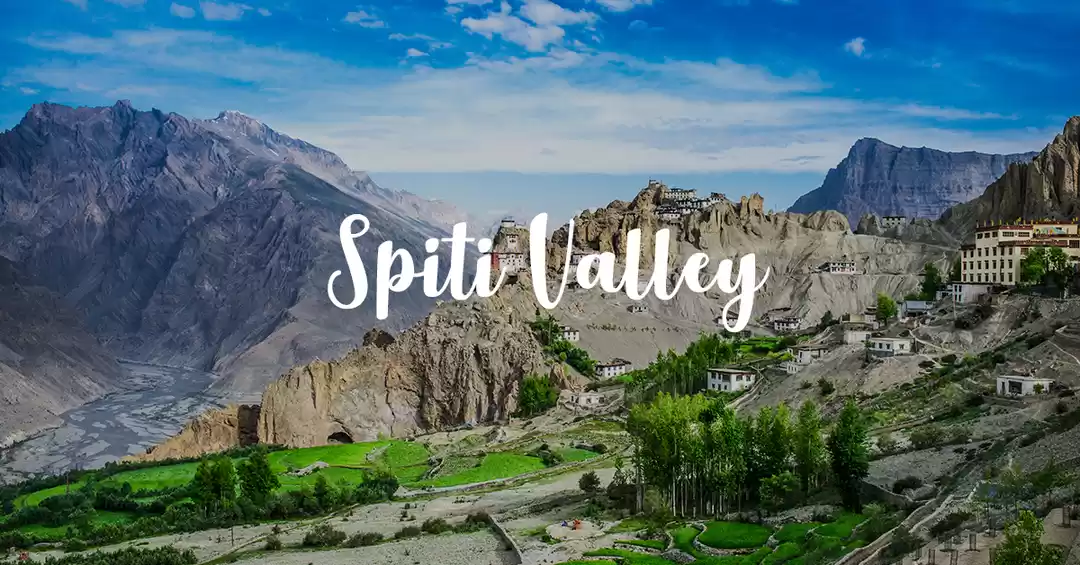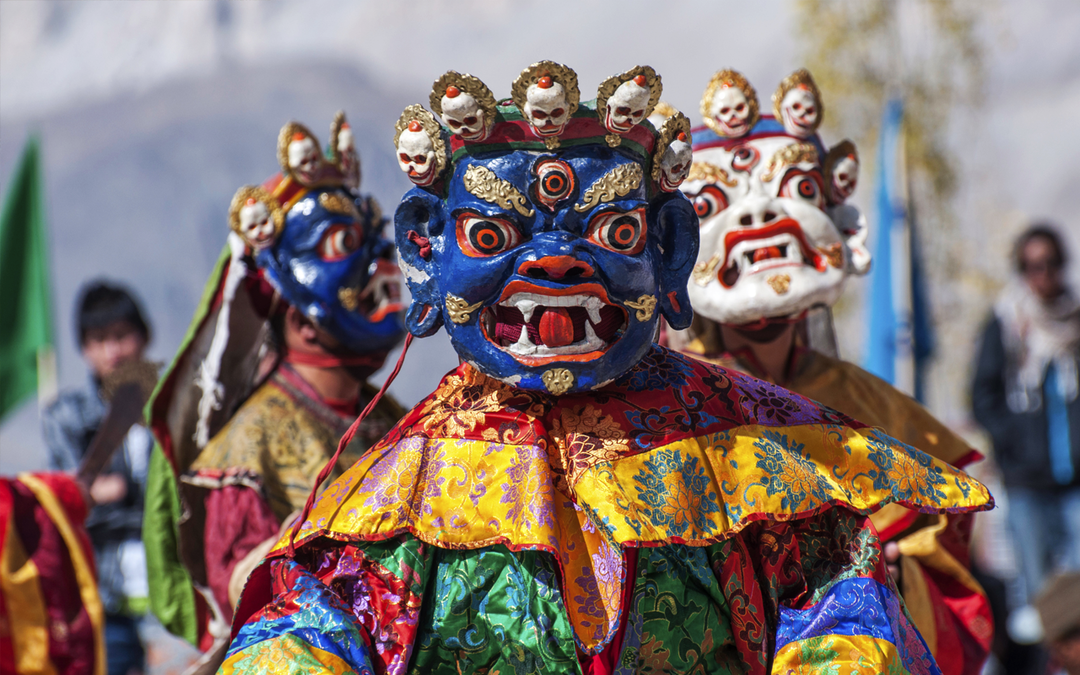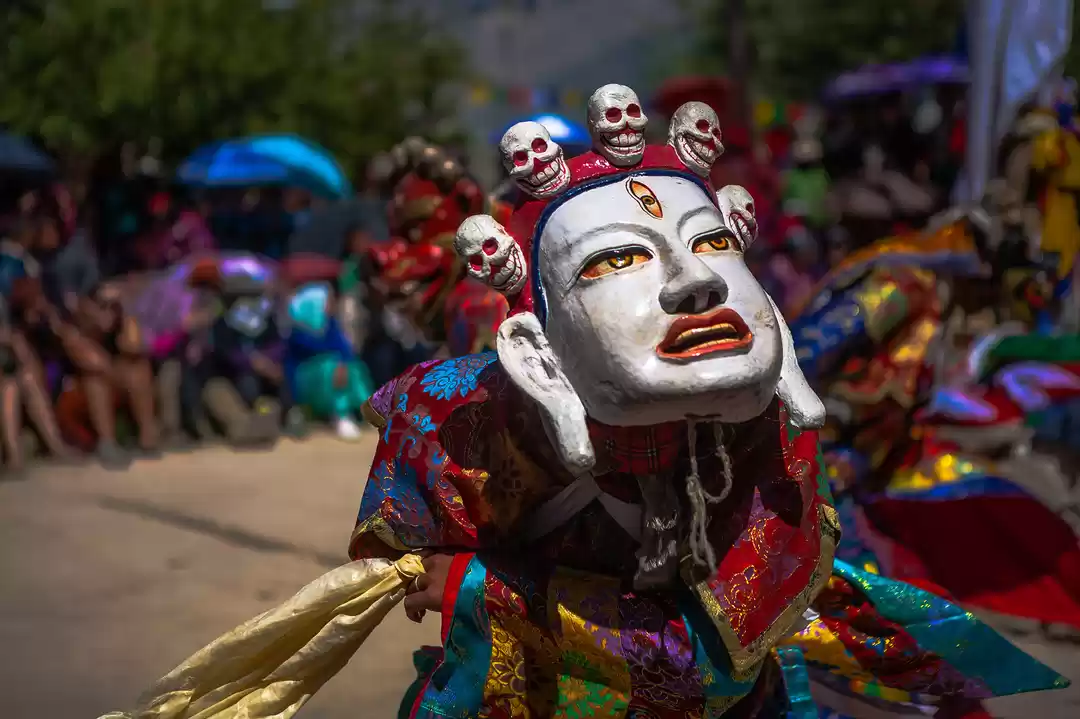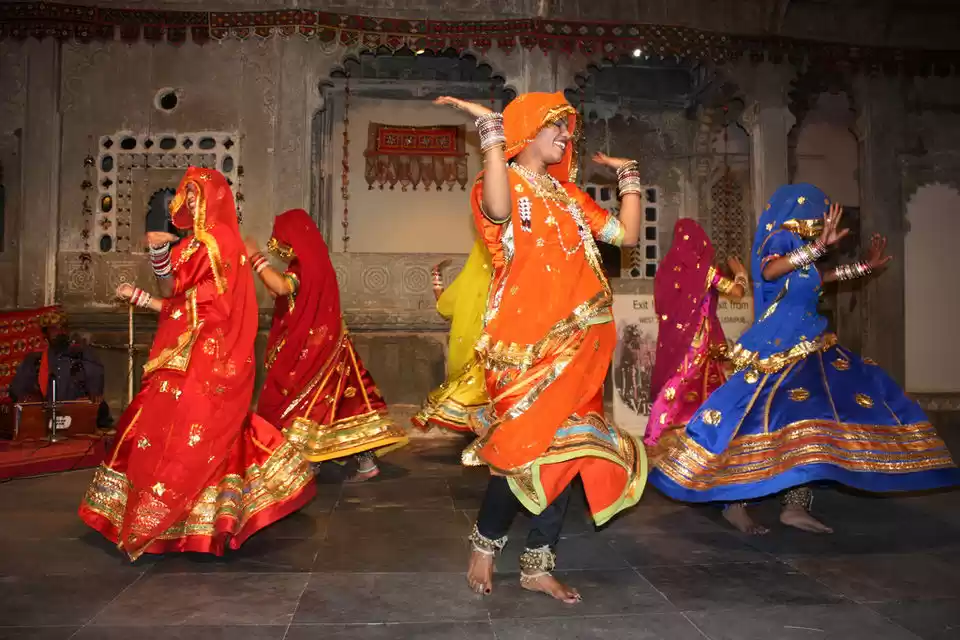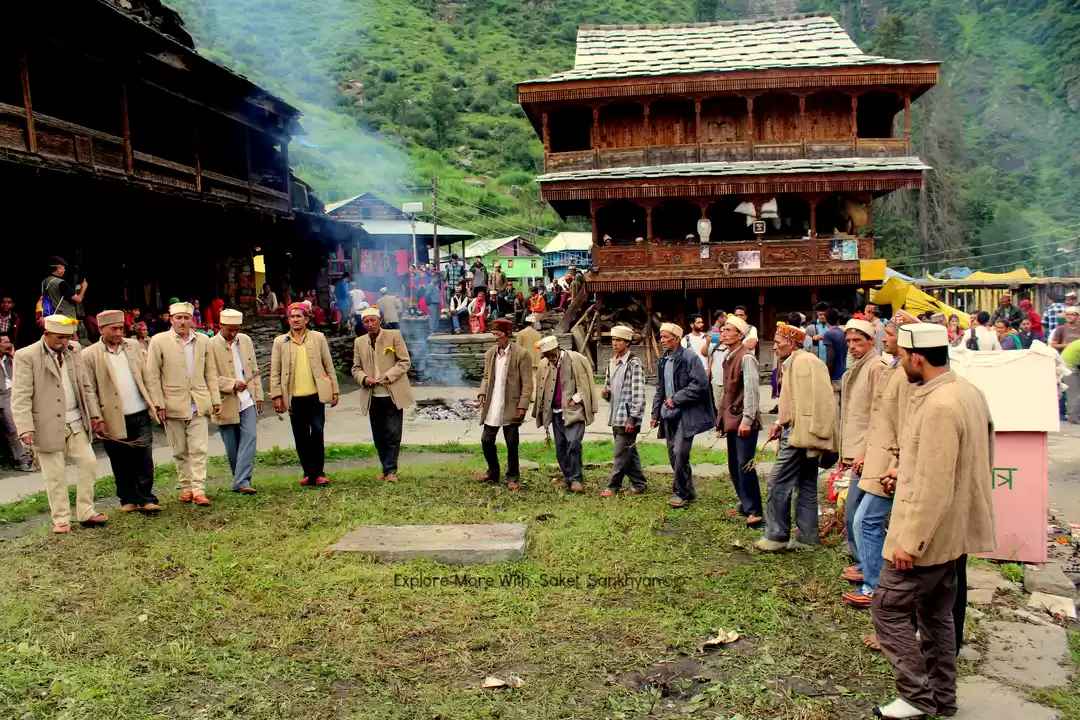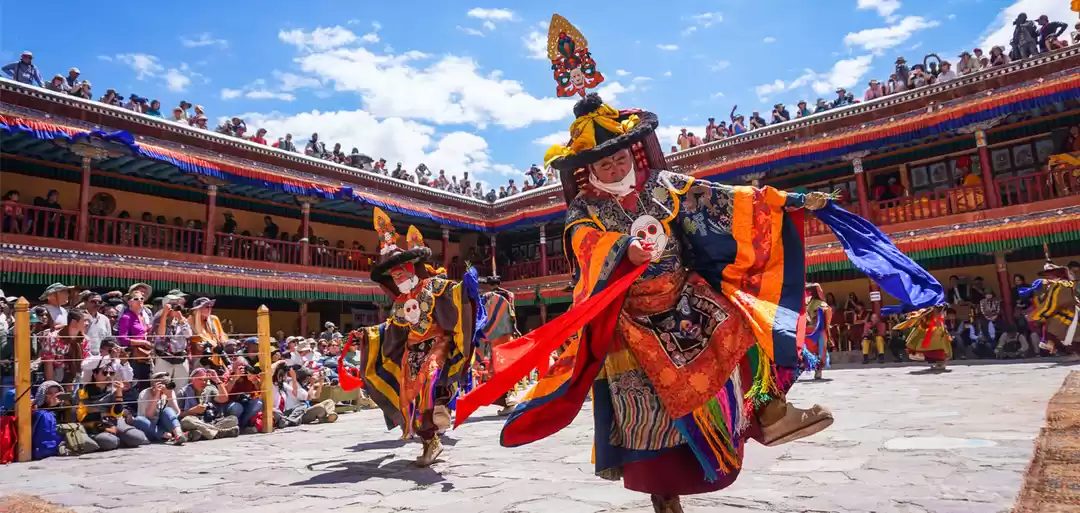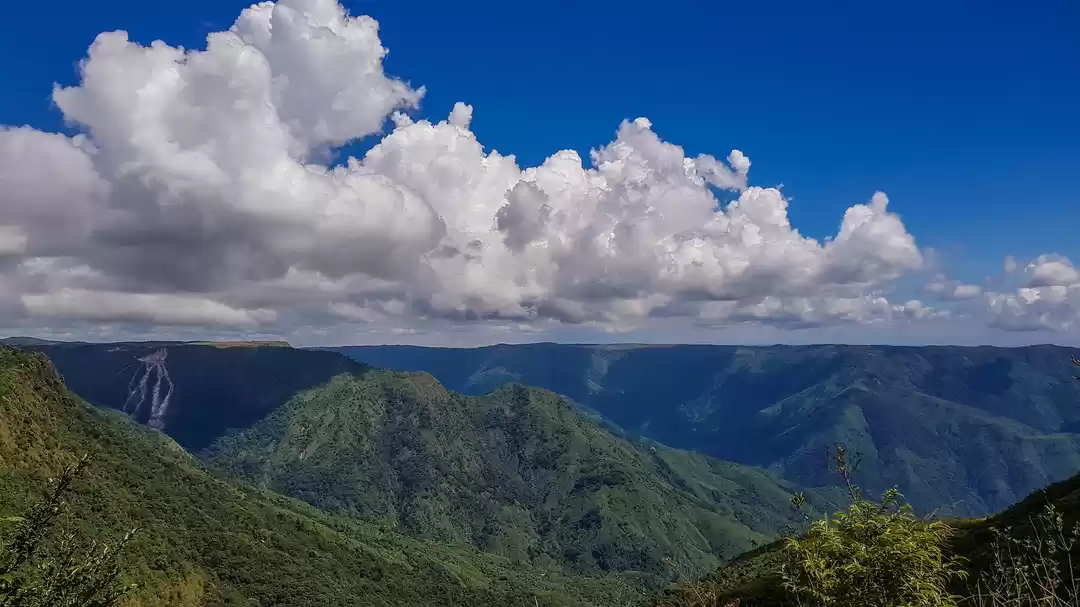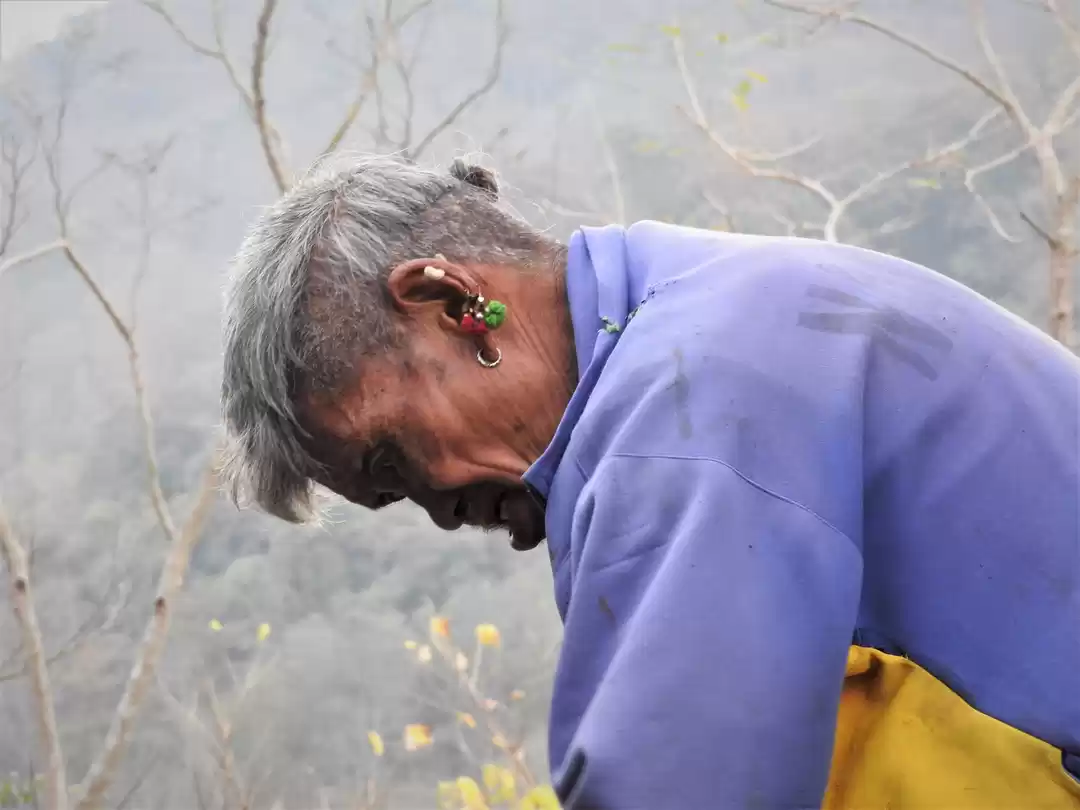
Mystery of the Fagli Festival.
This is a tale of the mystic masked dancers of Fagli, who dance and prance all around different villages singing songs full of abuses. Abuses..!!! Oh Yes, this festival involves abusing everybody around. This will be explained later here.

The word 'Fagli' or 'Phagli' comes from the word ‘Phag’ which is the month of the lunar calendar (between February and March) in different parts of Himachal Pradesh. On Fagli, Locals in Banjar Valley of Kullu District celebrate the awakening of Vishnu-Narayan, the god worshipped in this valley and his renewed protection for the coming season.

Fagli goes on for a couple of days and involves procession of dancers, music players and devotees in traditional costumes visiting the villages of the valley to announce the end of the cold winters and to deliver Lord Vishnu-Narayan blessings.
Fagli is a festival celebrated all-round the hilly state of Himachal Pradesh but it’s the mischievous masked dancers of villages around Banjar in Kullu that makes the Fagli festival of this particular valley all more interesting.

Only a numbered places in Himalayas have such intricate masks as a part of their cultures. Other such resemblances are found in parts of Nepal and Arunachal Pradesh.
The Fagli Tradition
Hinduism believes that the Gods sleep and rest in winter, whereas men are constantly in the danger of the active evil forces.
Fagli is a festival which is celebrated at the time when people here bid farewell to long winters. The Gods are woken up from their celestial sleep and everybody rejoices this awakening of their Gods.

The People have this bizarre tradition of abusing each other on the occasion of Fagli festival.
This bizarre ritual is an important part of the festival.
The Reason why these people do this was explained to me when I attended the Fagli festival in Tosh a few years ago. The Explanation is that the local deity refrain the locals from saying bad words to others.
These two days of the year, the deity gives full permission to people to bury down any grunts by singing the traditional songs of abuses.
The songs have developed different melodic compositions over the ages and a foreigner to these tongues would never figure out that these songs are but abuses.
The Masked Dancers
The dancers’ faces are covered with masks that for generations have belonged to the village families and are taken out and worn only on this occasion. Fagli masks are usually larger than other types of Himalayan masks and are characterized by exquisite carvings by the traditional artist. These designs vary from one village to another and are designed as per designer’s personal taste. Some of them are multicolored with a wreath of feathers on top but mostly belong to a stylistic tradition that can be considered classical.
Each mask carries a powerful and mysterious emotion of the craftsman who designed and worked on the mask. There is such freedom taken in the designs of these masks that you won’t find any mask similar to another.

Though most of the traditional old masks have found their way via the grey routes of art to the galleries of Milan, Brussels and Paris.
The attire of these masked dancers who are also known as ‘mandeale’ comprise of a colorful hand woven robe (chola) and decorated handmade wooden mask passed on from old generation to the next ones.
Their wear is made from locally available grass. The dancers are village boys chosen by elders of the village.
Though some villages completely prohibit liquor as their diety has instructed while some really dive in to the whole festive zone by spilling gallons of homemade wine.
Riding on his Yak Hair draped palanquin, 'Narayan Devta' dances alongside the masked men, their faces hidden behind brightly painted wooden masks to let the evil forces know that the deity has awaken.
The Villagers too join this dancing procession and together they chase away the ungodly forces.
The hillside along the celebration ground is dotted with groups of men watching the unique spectacle from their rooftops.
Women have little participation in this festival and they spend times of leisure. They sit back on their perched rooftops and balconies enjoying the ongoing carnival.
When every village is done celebrating and dancing, it's time for the important 'Beeth' ceremony.
'Beeth' is inter-village ceremonial gathering that's organized between two or more villages alternatively. A lucky participant of this ceremony has to arrange food for the whole village the same day. In simplified terms, Beeth means more dancing and drinking followed by even more dancing.
This Time in Fagli
The Masked dancers of Fagli have intrigued me for long and it wasn’t until two years ago that I wanted to attend the festival myself. I actually travelled last year as well in hope of attending infamous ‘Paldi’ Fagli festival only to know it happens much earlier than the other fagli festivals in the region.
Attending such traditional festival of the hills is something everyone should do at least once in a lifetime. If you like dance, music and culture, there’s no better festival to experience than Fagli.
Its a festival in its true sense, when masked men dance and prance all around the villages during early mornings throughout the day and nights to share blessings of there beloved deity. To Watch My Full Documentary on Fagli, Please Visit My Youtube.











